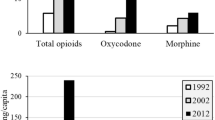Summary
A bioequivalence study of two rabeprazole enteric-coated formulations was carried out in 20 healthy Chinese volunteers according to a single dose, two-sequence, crossover randomized design. The two formulations were administered in two treatment days, separated by a washout period of 7 days. Blood samples were collected at specified time intervals over 10 hours post-dosing. Plasma samples were separated and assayed for rabeprazole using a selective and sensitive HPLC method with UV detection. The pharmacokinetic parameters AUC0–T, AUCmax, Cmax, tmax, t1/2 and MRT were determined from plasma concentration-time profile of both formulations. ANOVA and two one-sided t test procedures showed no significant difference in log-transformed Cmax, AUC0–T AUC0–∞ while the 90% confidence interval (CI) of the ratio of the geometric means of their values were also used to assess bioequivalence between the two formulations. The results of this study indicated that the two rabeprazole formulations can be considered to be bioequivalent.
Similar content being viewed by others
References
Morii M., Hamatani K., Takeguchi N (1995): The proton pump inhibitor, E3810, binds to the N-terminal half of the alpha-subunit of gastric H+,K(+)-ATPase. Biochem. Pharmcol., 49,1729–1734
Prakash A., Faulds D. (1998): Rabeprazole. Drugs., 55,261–267
Carswell CI., Goa KL. (2001): Rabeprazole: an update of its use in acid-related disorders. Drugs., 61, 2327–2356.
Fuhr U., Jetter A. (2002): Rabeprazole: pharmacokinetics and pharmacokinetic drug interactions. Pharmazie., 57, 595–601.
Hoyumpa AM., Trevino-Alanis H., Grimes I., Humphries TJ. (1999): Rabeprazole: pharmacokinetics in patients with stable, compensated cirrhosis. Clin Ther., 21, 691 -701
Keane WF., Swan SK., Grimes I., Humphries TJ. (1999): Rabeprazole: pharmacokinetics and tolerability in patients with stable, end-stage renal failure. J Clin Pharmacol., 39, 927–933
Nakai H., Shimamura Y., Kanazawa T., Yasuda S., Kayano M. (1994): Determination of a new H(+)-K+ ATPase inhibitor (E3810) and its four metabolites in human plasma by high-performance liquid chromatography. J Chromatogr B Biomed Appl., 660, 211–220
Takakuwa S., Chiku S., Nakata H., Yuzuriha T., Mano N., Asakawa N. (1995): Enantioselective high-performance liquid chromatographic assay for determination of the enantiomers of a new anti-ulcer agent, E3810, in beagle dog plasma and rat plasma. J Chromatogr B Biomed Appl., 673, 113–122.
Author information
Authors and Affiliations
Rights and permissions
About this article
Cite this article
Chen, J., Jiang, W.M., Gao, X.L. et al. Bioequivalence evaluation of two rabeprazole enteric coated formulations in healthy Chinese volunteers. European Journal of Drug Metabolism and Pharmacokinetics 29, 103–106 (2004). https://doi.org/10.1007/BF03190583
Received:
Issue Date:
DOI: https://doi.org/10.1007/BF03190583




